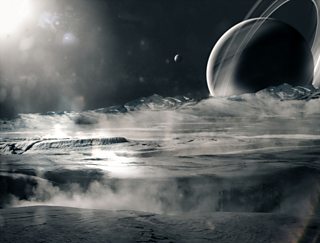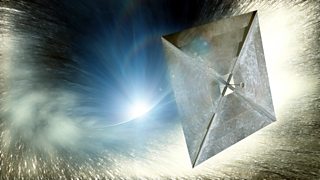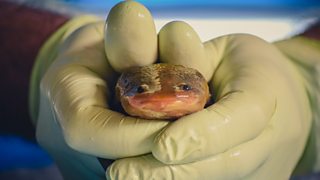Eleven out-of-this-world facts about the search for alien life
In a double episode of the Curious Cases of Rutherford and Fry, presenters Adam and Hannah boldly go in search of extraterrestrial life.

1. Moonlings
Our fascination with alien life took off after Galileo’s new telescope allowed us to look up close at the heavens in the early 17th Century. Dark patches spotted on the Moon were assumed to be vast oceans of water and were called “maria”, Latin for “seas”. Could they be teeming with life like our seas? We now know that lunar maria are actually planes of dark basalt from ancient volcanic eruptions.

Could we find alien ecosystems deep in the oceans of Europa and Enceladus?
2. Mighty Martians
Martians roaming the Red Planet would be taller, on average, than humans, concluded astronomer William Herschel in the 1870s. Using ever-more powerful telescopes, he’d carefully measured the size of Mars, along with the length of its seasons and days. The Red Planet is smaller than ours, therefore it has lower gravity, said Herschel, meaning that Martians would grow much taller.
3. Superior Saturnians
Philosopher Immanuel Kant claimed that extra-terrestrial intelligence was perfectly proportional to their distance from the Sun, from idiotic Mercurians to ingenious Saturnians.
4. Alien census
In 1848, the Scottish church minister and science teacher, Thomas Dick, set out to calculate the number of aliens living inside the Solar System. He predicted that if the population density of outer space matched that of England, with 280 people per square mile, then the Solar System must contain 22 TRILLION inhabitants.
5. Lunar life
The best place to look for life in the Solar System might not be nearby planets, like Mars, but on the distant moons Europa (which orbits Jupiter) and Enceladus (a satellite of Saturn). Both harbour a liquid water ocean underneath a thick icy crust.
It’s thought there must be an internal heat source preventing the moons’ oceans from freezing. Heat might be generated at the centre of each moon and released through hydrothermal vents on the ocean floors. On Earth, hydrothermal vents generate a chemical reaction that produces food for busy aquatic ecosystems. Could we find alien ecosystems deep in the oceans of Europa and Enceladus?
6. Space Squid

If life did exist on these watery moons, simple physics could provide clues to their appearance. If any large aquatic aliens exist, they might need to move fast to catch prey and escape from predators, so they could have streamlined shapes like squid, dolphins and sharks. The hunt for space squid starts here!
7. Distant worlds
Astronomers estimate that 40 billion Earth-like planets could exist in the Milky Way. They arrived at this number after detecting over 3,800 “exoplanets” in our nearby stellar neighbourhood. If you scale that up to the whole Galaxy, you could be looking at billions.
8. Signs of life

Astronomers think that AI aliens would prefer to hang out in high-energy hotspots, like black holes or supermassive stars.
How do you search for life? When studying exoplanets, astronomers look for gases they call “biosignatures” which are telltale signs of life. Methane is expelled by creatures on Earth, from termites to cows, but it’s also produced by volcanoes. So we aim to detect methane in combination with other gases, like oxygen and ozone, which is produced naturally in our atmosphere by the action of sunlight.
9. The Goldilocks Zone
Where do we look? The best place to concentrate on, we think, is probably exoplanets that lie in the “habitable zone”. This is a position that’s not too close, or far away, from their host star, thus providing the perfect conditions for life to spring up. The closest exoplanet we’ve discovered is called Promixa Centuri B. It lies in the habitable zone around the nearest star to our Sun.
10. Solar sailing
An ambitious private project to reach this star system, called Breakthrough Starshot, was launched in 2016. Funded by Russian “venture capitalist and physicist” Yuri Milner, the aim is to develop a proof-of-concept solar sail spacecraft, which would ride on the solar wind at 20 percent of the speed of light. If they succeed then a fleet of these tiny crafts would take 20 years to reach Proxima Centauri and four more years to send data back to Earth.
11. Intelligent aliens
Any alien civilisations that are thousands or millions of years older than us may have developed artificial intelligence. They might not be soft and squishy, or need to live in the “habitable zone” where water and oxygen abound. Some astronomers think that AI aliens would prefer to hang out in high-energy hotspots, like black holes or supermassive stars.
More from Radio 4
-
![]()
The Curious Cases of Rutherford and Fry: The Alien Enterprise Part 1
How do we look for alien life and what are we expecting to find?
-
![]()
Science has the answer.
-
![]()
Featuring salamanders, cyborgs and pigeon whistles.
-
![]()
Do you struggle getting from A to B?






















